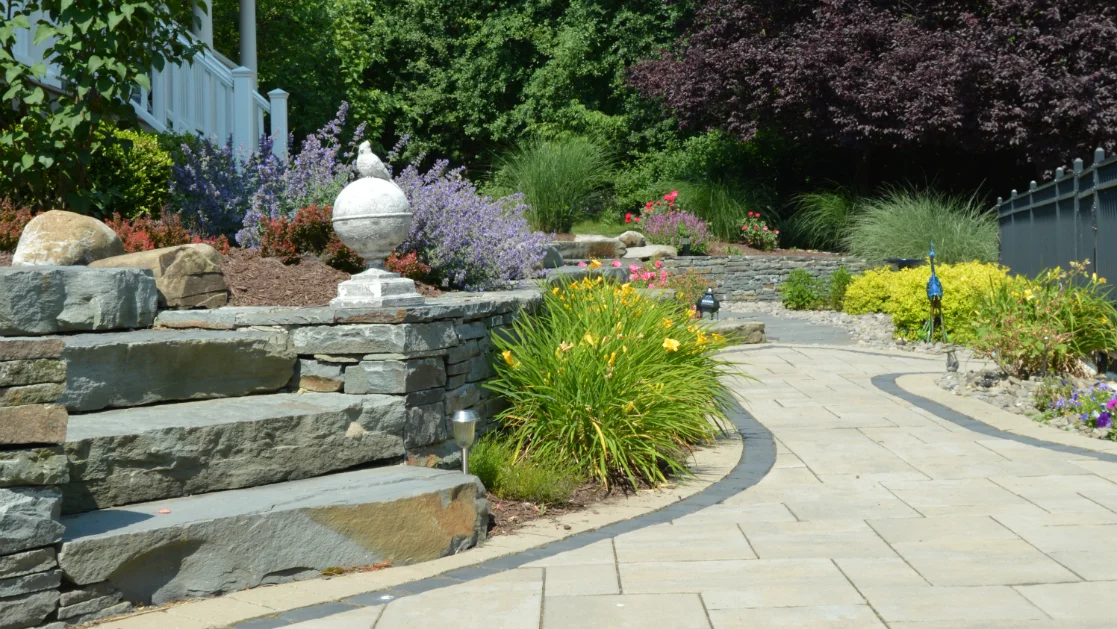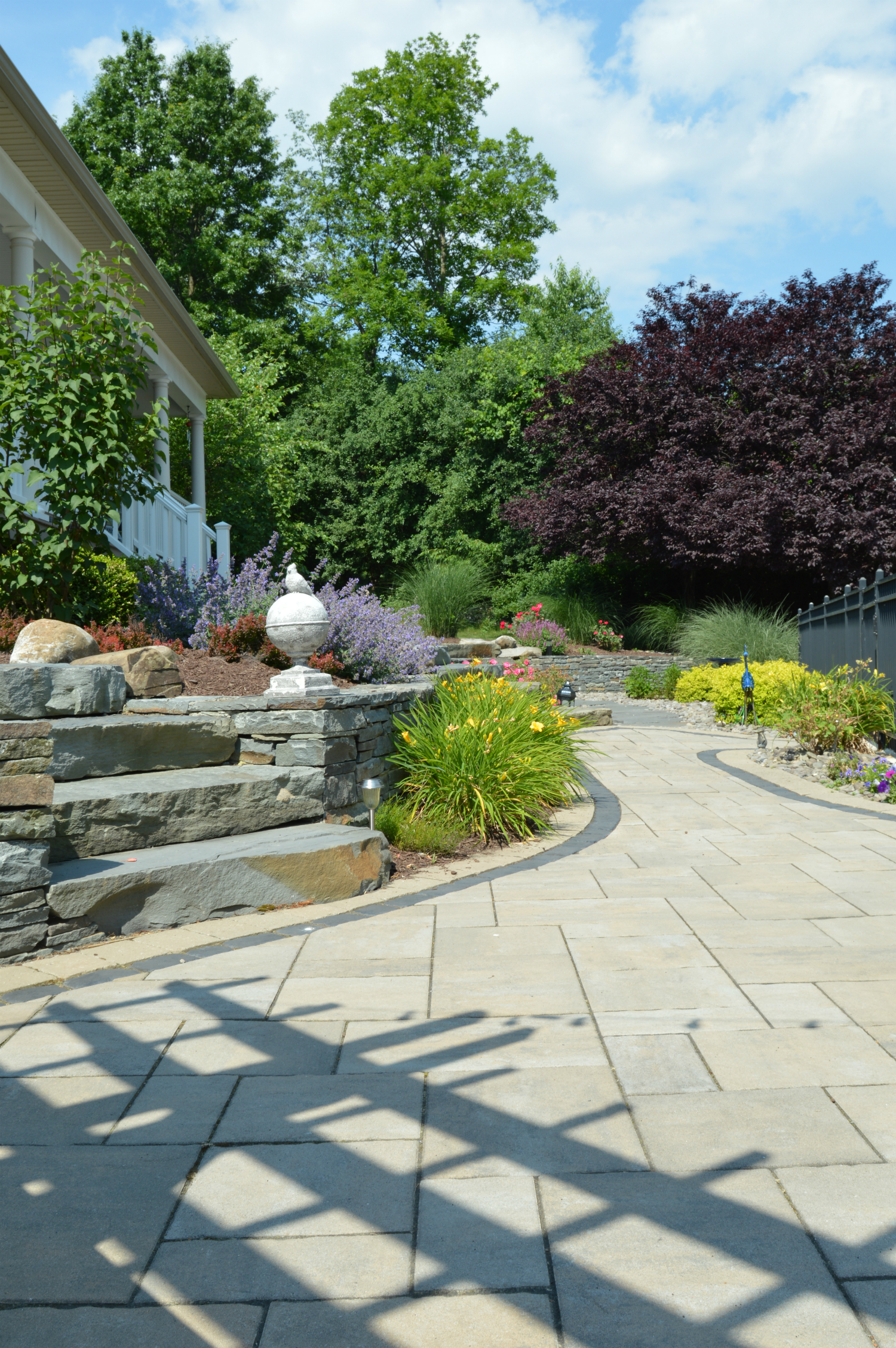We all intuitively know what flow is when it comes to landscape design, even if it’s only brought to our attention when it isn’t there. But to define this abstract term, flow can be described as the sense of circulation and connectivity of parts of a landscape, whether visual or physical. When absent, our movement through the space seems halted and unnatural. This is closely related to accessibility which is the ability to physically access these spaces in an efficient manner. Here are some ways to ensure your Bethel, NY, outdoor spaces flow easily into one another and provide you enough accessibility for your purposes.
Connect Spaces with Walkways and Steps
First and foremost to achieving flow and accessibility is ensuring that all of your outdoor areas are quickly and easily accessible, both to the house and from one another. This is especially important for areas with functions that are dependent on one another, such as outdoor kitchens and outdoor dining rooms, or even indoor and outdoor kitchens. This should be done using easily navigable and safe to use walkways or steps built from non-slip materials. To ensure these remain safe to use after dark, remember to have ample lighting installed to light the way.
Provide Direct Access
Meandering walkways are great for providing a scenic tour of your landscape, however for connecting functional areas, walkways should be as direct as possible. A sweeping curve or two is still excellent for contributing a sense of fluidity. This can be incorporated into the edges of walkways and patios in such a way as to not inhibit connectivity.
Related: Inventive Landscaping Ideas for Small Yards
Widen Staircases and Walkways
If congestion is a problem in your yard, consider widening your existing walkways or outdoor stairs. This will improve accessibility and contribute to better flow throughout your yard. Narrow steps are especially constrictive as they restrict both movement and the eye across multiple levels. By extending the width of your steps, you can ensure a gentler, more pleasing transition from one level to another. In some cases this can even be done by simply extending the base steps into a wide fan.
Use Subtle Divisions of Space
Dividing your landscape into multiple distinct areas is essential for creating visual interest and contributing to more efficient use of functional outdoor areas. However, if flow and accessibility is your priority, these divisions can be done subtly without restricting movement and impeding a sense of openness. Consider incorporating a change of laying patterns, bordering, or even a different material to create visual difference between hardscaped areas. Walkways and plant beds are ideal for achieving the same subtle effect in your hardscape.
Related: Does Your NY Patio Need Outdoor Rooms?
Spread Out Features
A cramped space is certainly not conducive to flow and accessibility. Keep your features spread out and limit clutter to ensure optimal use of functional areas such outdoor kitchens and fire pit areas. This will not only ensure an area that is easier to work in, but is also a must for safety. Consider extending your patio area to allow better utilization of space and provide extra elbow room for safe and comfortable outdoor leisure. Built-in seating is also an excellent way of reducing clutter and providing a tidy appearance for your patio.
Related: How You Know It's Time To Call A Landscape Design Firm


